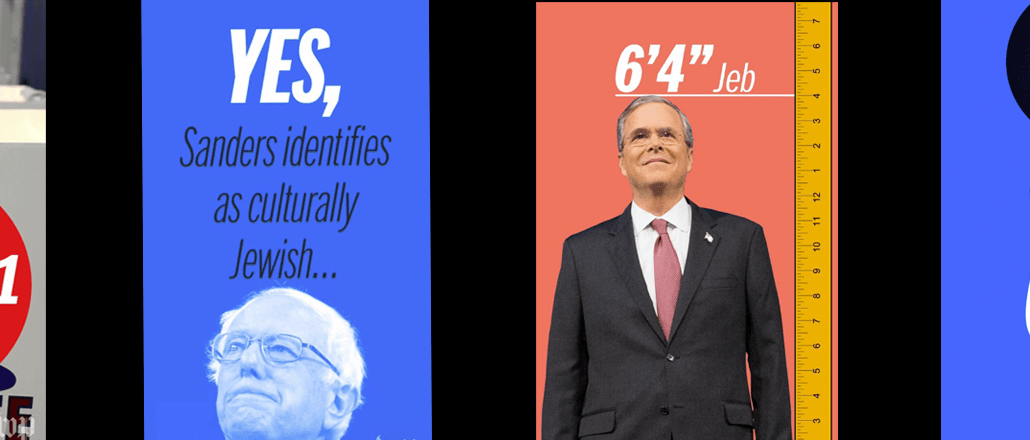Insights from CTV leaders at Dentsu, Horizon Media and more

The future of video at The Washington Post is short, mobile and increasingly vertical.
On Monday, the Post published a minute-long vertical video about the importance of Super Tuesday, which was told with animated graphics and meant to be watched with the sound off. The video, produced by politics video editor Sarah Parnass, is the latest in a series of “Know Its,” the Post’s name for its vertical video explainers. Previous entries have focused on aspects of the presidential election (“What to expect in the New Hampshire primary”) and frequently Googled questions about the candidates (“How tall is Jeb Bush?” and “What is Donald Trump’s net worth?”). The format is reminiscent of the vertical videos from many of the publishers on Snapchat Discover, including Vox and The Wall Street Journal, which are similarly heavy on animation.
The Washington Post’s other efforts around vertical video have been more ambitious. In January, it published “The Waypoint,” a mobile-optimized documentary focused on refugees braving a dangerous journey into Europe. The Washington Post also launched its own vertical video player last fall.
Vertical video is a small but increasingly core part of The Washington Post’s video operation. Out of the hundreds of videos it produces each month, around six are vertical. But Micah Gelman, Washington Post director of editorial video, said that the newspaper’s growing investment in vertical video is one of the many ways it’s thinking more critically about how it creates video for specific form factors and platforms.
“We’re trying to tell stories that are platform specific rather than creating one video and expecting it to work everywhere,” said Gelman. “User behavior has changed, so we have to be more adaptable to that.”
What you need to know about Super Tuesday:https://t.co/BNGtjknOOk
— Washington Post (@washingtonpost) February 29, 2016
The Post’s video strategy has shifted over the past six months. Since deep-sixing its “PostTV” brand last fall and shifting away from television-style and long-form video, it has adopted a video strategy built on news explainers, aggregation and live coverage. Its metabolism has also increased, with its 40-person team producing around 60 videos a day. “We’re not doing mini-documentaries. We never found a home for that on Washington Post. It didn’t match what the rest of the paper was doing,” said Gelman.
But while the Post is bullish on the future on vertical video, its advertisers have been slow to follow. Vertical videos on the Post’s Web video player are preceded by standard horizontal pre-roll ads, which doesn’t make for a very seamless transition. Gelman said that brand interest is low so far but predicted that won’t be long before more brands get on board.
“Us old guys lost the ability to get people to turn their phones sideways to watch videos. That’s too hard. Why fight it?” he said.
More in Media

Ad Tech Briefing: The ‘plumbers’ posing as the unlikely saviors of the internet
After several false dawns, can Cloudflare’s ‘anti-AI scraping tool’ finally offer publishers a road to commercial redemption?

Generative AI, not ad tech, is the new antitrust battleground for Google
Global regulatory scrutiny is shifting from Google’s ad tech and search dominance to generative AI, as they aim to address the most pressing threats to publisher business models.

Yahoo takes cues from platforms as it offers more editorial control to creators
Through its creator program, Yahoo is evolving from its roots as a content aggregator and editorial publisher to more of a distribution platform for individual creators.





